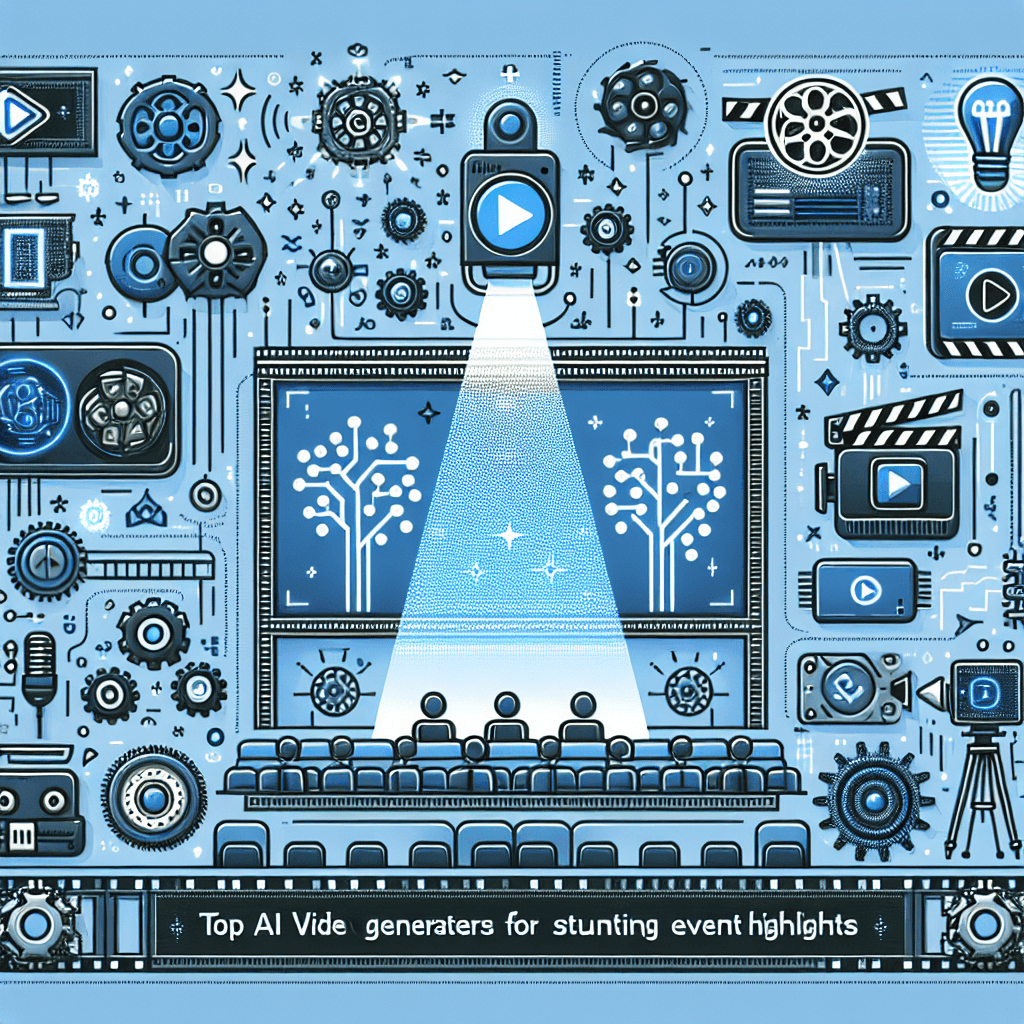Introduction: The Rise of 3D Technology
In today’s fast-paced digital landscape, the demand for aesthetically pleasing visuals is at an all-time high. With businesses and individuals striving to capture audience attention, 3D images have emerged as a vital asset in various fields, including marketing, gaming, architectural design, and virtual reality. Leveraging the power of Artificial Intelligence (AI) has revolutionized the way we create and manipulate these stunning visuals.
In this article, we delve into the top AI tools that help artists, designers, and marketers craft breathtaking 3D images, each tool tailored to meet specific needs and levels of expertise.
1. What Are AI-Powered 3D Tools?
AI-powered 3D tools utilize machine learning algorithms to enhance and automate the process of creating three-dimensional visuals. These tools can significantly reduce the time and effort involved in designing intricate 3D models by offering features that assist in modeling, texturing, rendering, and even simulating various effects. As a result, anyone—from beginners to seasoned professionals—can produce quality 3D images with ease.
2. The Importance of 3D Images in Today’s Market
In an increasingly visual-centric market, 3D images have shown their potential to captivate and engage audiences. They aid in storytelling, provide accurate representations of products, and create immersive experiences that flat images simply cannot achieve. Businesses that effectively leverage 3D visuals tend to experience higher engagement rates and conversions—ultimately improving their bottom line.
3. Key Benefits of AI Tools for 3D Creation
The benefits of using AI tools for creating 3D images are numerous:
- Time Efficiency: Automation speeds up the 3D modeling process significantly.
- Cost-Effective: Reduces the need for extensive software and professional expertise.
- Enhanced Creativity: Provides unique features that stimulate imaginative processes among creators.
- Accessibility: Offers user-friendly interfaces, enabling those without extensive experience to create stunning visuals.
4. Blender: The Open-Source Powerhouse
Blender is renowned for being an open-source 3D creation suite that includes features such as modeling, rendering, and animation. Its vast community contributes numerous plugins, and recent updates have introduced AI capabilities exhibiting enhanced rendering speeds and image quality. Blender’s intuitive user interface allows beginners to navigate through its robust tools, while advanced users can delve deep into scripting and high-end visual effects.
5. Daz 3D: Bringing Characters to Life
For character modeling and animation, Daz 3D stands out as a premier choice. It offers an extensive library of customizable human models and accessories, allowing artists to create realistic characters for games, films, or artwork. The software harnesses AI-driven features that refine textures and optimize rendering times, making character creation not only efficient but also enjoyable.
6. Artbreeder: Merging Creativity with AI
Artbreeder offers a unique twist, enabling users to use AI algorithms to blend and remix images. This tool allows artists to collaboratively create stunning visuals by merging different artworks. With its intuitive sliders for adjusting individual attributes, Artbreeder serves as an exciting platform for generating imaginative landscapes and characters with an artistic edge.
7. RunwayML: Pioneering Easy-to-Use AI Tools
RunwayML brings AI into the hands of creatives with its suite of tools designed for graphic designers and video editors. It includes features that enable users to generate 3D models effortlessly, integrate AI-enhanced effects, and even animate still images. RunwayML excels in user experience, making sophisticated AI technology accessible to those without technical backgrounds.
8. SketchUp: Enhancing Architectural Visualization
Architects and interior designers can benefit tremendously from SketchUp, a tool tailored for creating detailed architectural models. With its AI integrations, users can access vast libraries of materials and textures to enhance their designs. SketchUp allows complex modeling while maintaining a user-friendly interface that ensures anyone can create impressive architectural diagrams.
9. NVIDIA Omniverse: The Future of Collaborative 3D Design
NVIDIA Omniverse is revolutionizing the landscape of 3D collaboration. The platform allows creators to work together in real-time on complex projects, combining their unique skills and resources. With AI-driven tools for rendering and simulation, Omniverse represents a significant leap in the realm of interactive 3D visualizations.
10. ZBrush: Sculpting at Its Finest
When it comes to detail-oriented sculpting, ZBrush leads the charge. This application is widely used in game and movie production, allowing artists to create highly detailed 3D models. Recent AI enhancements have increased the smoothness and fidelity of textures, enabling users to create artwork that feels lifelike and invites closer inspection.
11. DeepArt: Infusing AI into Artistic Styles
DeepArt takes a different angle by utilizing neural networks to transform ordinary images into stunning artwork. Users can upload photographs and apply various artistic styles, including 3D effects. This fusion of AI and artistic vision expands the creative possibilities for artists looking to innovate their portfolios.
12. Pixologic Sculptris: The Beginner-Friendly Approach
For aspiring artists, Pixologic’s Sculptris is an ideal choice to learn 3D sculpting basics. It offers a simplified interface while harnessing some of the intelligent features seen in more advanced software. Sculptris is perfect for beginners eager to explore 3D modeling without overwhelming complexity.
13. SketchAR: Merging Augmented Reality with 3D Design
SketchAR leverages augmented reality (AR) to provide an innovative way to create 3D artworks. Users can draw and design in real-time with the aid of AR technology, enabling them to visualize their creations from multiple angles. This interactive dimension to creating 3D models fosters a novel approach not seen in traditional software.
14. 3D Slash: Fun Meets Functional
3D Slash offers a playful approach to 3D modeling, reminiscent of building blocks. This tool is particularly beneficial for education and first-time users, allowing them to create basic 3D structures with ease. Its intuitive interface encourages exploration and learning, making 3D design fun for everyone.
15. Vectary: Cloud-Based Collaboration
Vectary runs on a cloud-based system that allows multiple users to collaborate seamlessly on 3D projects. It offers a wide range of templates, textures, and models that can be easily manipulated by designers. The integration of AI technologies in Vectary enhances creative workflows and improves rendering efficiency, making it a valuable tool in team environments.
16. Clara.io: Cloud Rendering Made Simple
Clara.io offers a browser-based approach to 3D modeling and rendering, making it accessible from any device. Its AI-driven rendering capabilities ensure quick previews of projects, allowing users to iterate faster. With support for various file formats, Clara.io simplifies the workflow between different 3D applications.
17. Fusion 360: A Comprehensive CAD Solution
Fusion 360 is widely recognized for its advanced computer-aided design (CAD) capabilities. While it serves industrial design purposes, the software also integrates tools for rendering and creating stunning 3D images. Its AI features aid in design validation and simulations, making it a robust solution for professionals.
18. Adobe Dimension: Simplifying 3D Design
Adobe Dimension is tailored for designers familiar with Adobe’s ecosystem. It allows users to create product mockups in a 3D space with relative ease. The integration of AI features streamlines processes like image placement and lighting adjustments, allowing for compelling product visuals perfect for marketing campaigns.
19. How AI is Transforming the Future of 3D Design
As technology evolves, the landscape of 3D design is shifting towards more collaborative and intuitive experiences. AI is expected to play an increasingly significant role in automating tedious tasks, allowing artists to focus on creativity and ideation. Companies are investing in smart tools that enhance productivity, pushing the boundaries of what is possible in 3D creation.
Conclusion: Embracing the AI Revolution in 3D Design
As we traverse the digital age, it is clear that the potential for AI in creating stunning 3D images is immense. With tools like Blender, Daz 3D, and Artbreeder leading the charge, creatives across disciplines have unprecedented opportunities to express their visions. As AI technologies continue to evolve, we are sure to witness exciting developments that will redefine how we approach 3D art and design. Embracing these advancements not only improves the aesthetic quality of our work but also paves the way for innovative storytelling and engagement in an increasingly visual world.
The quest for stunning 3D images is no longer limited to skilled professionals; with AI tools, anyone can begin their journey into the realms of creativity and imagination.








